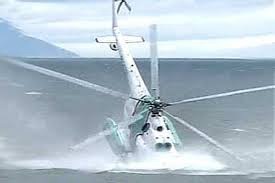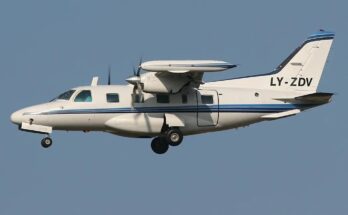
Atran An-12 Suffers Gear Collapse During Emergency Landing in Russia
On a routine cargo flight, an Atran Antonov An-12 experienced a critical landing gear failure during an emergency landing at Novy Urengoy Airport in Russia. The incident, which occurred as the aircraft was returning to the airport due to technical difficulties, resulted in significant structural damage but fortunately no casualties.
The Antonov An-12, a Soviet-era four-engine turboprop widely used for cargo transport, has a long history of reliability. However, aging airframes, harsh operating conditions, and mechanical failures can still pose risks to flight operations. The incident at Novy Urengoy once again highlights the challenges of operating older aircraft in demanding environments.
The Incident: What Happened?
The Atran An-12 was conducting a routine cargo flight when the crew detected an unspecified technical malfunction shortly after takeoff. As a precautionary measure, the pilots decided to return to Novy Urengoy for an emergency landing.
During the approach, the aircraft’s landing gear failed to deploy correctly. The flight crew attempted to troubleshoot the issue, but time was running out. With fuel levels dropping and no viable alternatives, the crew was forced to proceed with the landing despite the compromised landing gear.

As the aircraft touched down, the landing gear collapsed under the weight of the plane, causing the fuselage to scrape along the runway. Sparks flew as the aircraft skidded before coming to a halt. Emergency response teams rushed to the scene, but all crew members were able to evacuate safely.
Causes and Investigation
Following the accident, Russian aviation authorities launched an investigation to determine the cause of the gear collapse. Preliminary reports suggest the following potential factors:
1. Mechanical Failure: The landing gear system may have suffered a hydraulic or structural failure, preventing proper deployment.
2. Aging Aircraft Issues: The An-12, designed in the 1950s, remains in service with various cargo operators, but older aircraft are more prone to mechanical issues.
3. Harsh Operating Conditions: Russia’s extreme weather conditions, including freezing temperatures, could have affected the aircraft’s hydraulic or structural components.
4. Maintenance and Operational Factors: Investigators are examining whether proper maintenance procedures were followed and whether previous reports of gear-related issues existed.
Impact on Operations and Safety Concerns
Although the crew escaped unharmed, the incident underscores ongoing concerns regarding the operation of aging Soviet-era aircraft in commercial and cargo transport. The An-12 remains a workhorse for cargo airlines, but as more incidents involving older aircraft occur, questions arise about the safety and viability of continuing to operate them.

This incident may prompt regulatory bodies to impose stricter inspection and maintenance requirements on older aircraft, ensuring their airworthiness before each flight. Cargo operators may also consider phasing out older planes in favor of modern aircraft with improved safety features and reliability.
Emergency Response and Aftermath
Emergency teams at Novy Urengoy responded quickly, extinguishing any fire risks and assisting the crew in evacuating. The airport temporarily suspended operations to clear debris and assess runway damage.
The damaged An-12 will undergo a thorough examination to determine if it can be repaired or if it will be written off. Meanwhile, Atran Airlines is cooperating with investigators to improve safety protocols and prevent similar incidents in the future.
Conclusion
The gear collapse of the Atran An-12 at Novy Urengoy serves as a reminder of the risks associated with operating older aircraft, especially in demanding conditions. While no lives were lost, the incident reinforces the importance of rigorous maintenance, modernized safety standards, and ongoing assessments of aircraft reliability.
As the investigation continues, aviation authorities and cargo operators must work together to enhance safety measures, ensuring that aircraft in service remain capable of performing safely under all conditions.


